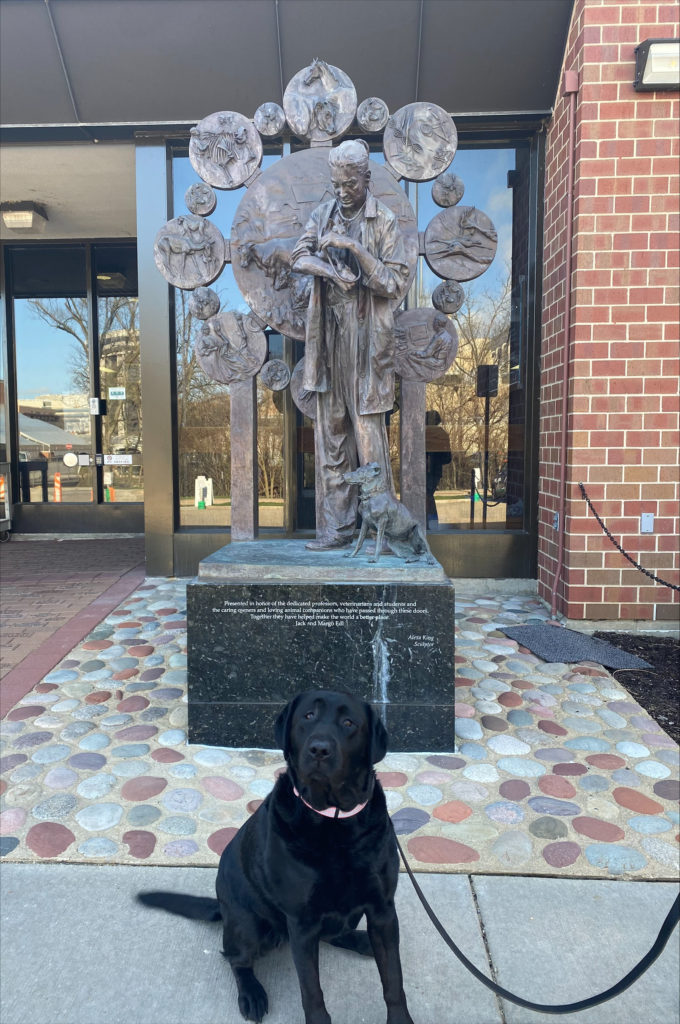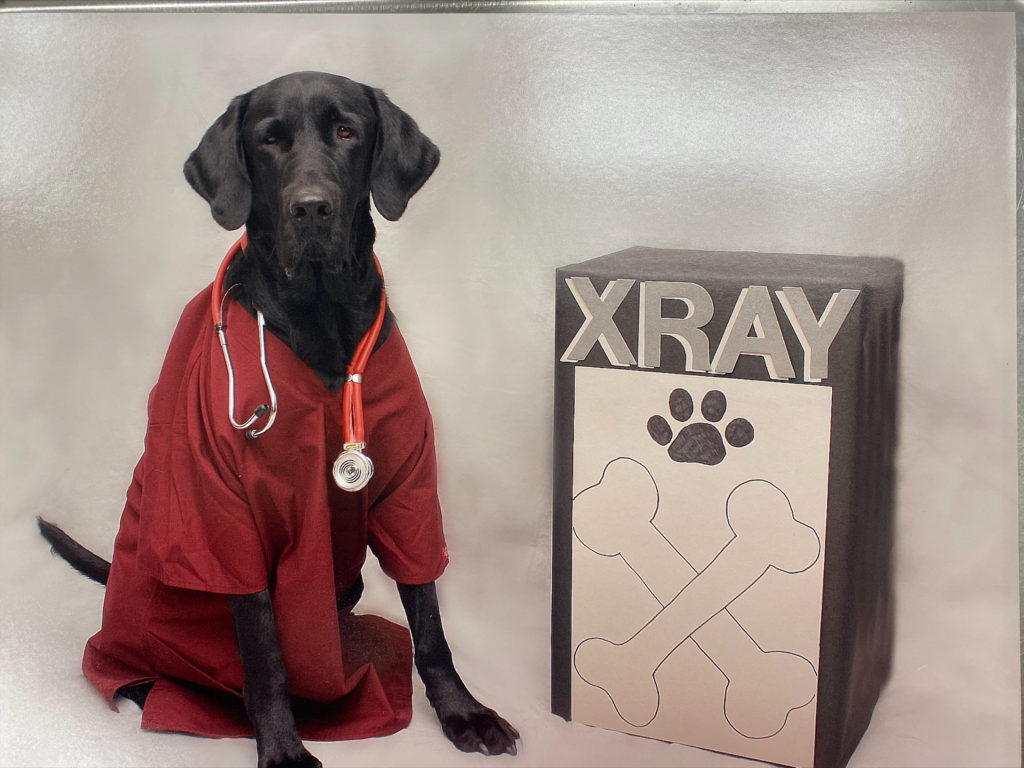In Their Debt: Labs donate blood to help dogs in their community.

A black Lab named Lily saved the life of a black Lab puppy without moving a muscle.
For more than two years, Lily has donated blood to the University of Wisconsin Veterinary Care Blood Bank in Madison, Wisconsin. She loves the attention and treats she gets from the staff, according to her owner, Jane Pruhs.
“She’s excited when we pull up,” she said. “She just loves going in. They’re so loving to her, and she eats up all the attention.”
Donor dogs like Lily get other perks, too, including free annual exams; vaccines; preventative medications for fleas, ticks, and heartworm; food; and dental care. But the best reward for the Pruhs family is knowing she’s saving the lives of other dogs – like the emergency case of the black Lab puppy who ate poison and nearly died.
“They said, ‘Lily saved another black Lab today by donating,’” she recalled. “It’s really cool that she is helping save other dogs’ lives.”
On donation days – typically once every two months, like with human blood donors – Lily enjoys breakfast before Pruhs escorts her into the hospital, where she’s greeted by veterinary technicians who take Lily into the donation room for light sedation.
Once she’s home, Lily is typically sleepy and “snuggly” through the evening. (“We call her the ‘Queen of the Couch,’” Pruhs said with a laugh.) Then the next day, she’s back to playing outside with the family’s two children and their friends.

“She’s just a really great family dog,” Pruhs said. “Lily gives so much love to our family, and we’re really proud that she can help other animals who are in need.”
Canine blood donors like Lily provide an invaluable service since blood cannot be manufactured or synthesized, according to Emma Doubleday, CVT, blood bank coordinator at the University of Wisconsin Veterinary Care Blood Bank.
“There’s no fake alternative,” she said. “You just can’t make it in a lab. Well, you can make it in a Lab dog, but not in a physical lab setting.”
Every emergency animal hospital in the country must have blood ready for dog and cat emergencies. The most common reasons dogs can need blood transfusions are a traumatic experience like being hit by a car, progression of a disease, or getting into poisons, she noted.
“When any dog – especially Labradors, who like to sniff into things – gets into rat poison, certain ones stop the clotting factor, so a lot of dogs will need plasma or packed red blood cells,” she explained.
There are around 30 donor dogs in the UW program, including Labs and Lab mixes. Participating dogs need to weigh more than 50 pounds and be one to eight years old and have an easygoing temperament.
Dogs must also enjoy the experience, Doubleday emphasized.
“We never want to take an animal that’s not happy to see us when they walk in. We want to see that tail wagging,” she said.
The biggest part of the job is making sure the dogs know how to lie still for the blood draw from their neck, she said. Sometimes she sedates donors, like Lily, but others just lie flat and rest during the process.

Dogs can donate every four weeks, typically around 450 ml. Doubleday likes dogs to donate to the UW blood bank six times a year to qualify for all the benefits – one participating Great Dane gets $300 of food each month alone. She noted that benefits vary at blood banks, but she likes to have so many to offer an incentive to participate while also helping keep the donors as healthy as possible.
The hospital averages four blood transfusions each week, so donors are always needed – both at the University of Wisconsin Veterinary Care Blood Bank and at emergency veterinary hospitals around the country, she said.
“People have more pets now – and are willing to spend more on their pets now – so there are longer waits than ever at some national blood banks that sell to outside places,” she said. “Sometimes you’re waiting a couple months and that’s not always possible when you have a dog that needs it now.”
There are cases when a dog needs a transfusion of the freshest blood possible, such as instances of immune-mediated thrombocytopenia (when the immune system attacks platelets), so she’ll place an urgent call to see if one of her donors can come in the next morning. Someone always rises to the occasion, for which Doubleday is extremely grateful.
It’s also inspiring to see the veterinary teams able to work their magic thanks to the blood donations. In one emergency case, a dog broke a bone in his throat, which caused heavy bleeding.

“He had to have emergency surgery to help him breathe – a tracheotomy. He got three units of blood,” Doubleday said. “We just saw him for a recheck a couple of weeks ago and he was wagging his tail, happy as can be. So that was really amazing.”
The UW blood bank collected more than 300 donations from dogs in 2021. One dog’s blood saved 11 other dogs last year alone. Doubleday encourages dog lovers to consider enrolling their pets in a local blood donor program to save other dogs in the community.
“Think if your dog was in that scenario and needed that blood that could only be replaced by another dog. Why not give? You get benefits but also, you’re paying it forward and helping to save another dog’s life,” she said. “It’s a great, great thing to do.”
For more information, visit: https://uwveterinarycare.wisc.edu/360-support/blood-bank.



